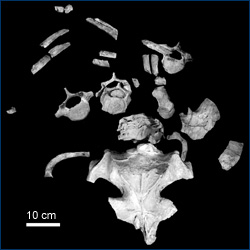
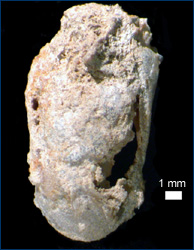
Investigating a fossil whalefall locality on Año Nuevo Island
February 8, 2007
UCMP museum scientist David Haasl and UCMP grad student Nick Pyenson recently undertook a unique field expedition off the central coast of California to investigate the original locality of a fossil baleen whale that represents the first documented fossil whalefall in California.
The story starts in 1987, when Brian Fadely, then a UCSC graduate student, discovered an unusual fossil eroding out of the cliffs on Año Nuevo Island. Frank Perry, a regional expert on fossils from the central coast, recognized that the fossil represented the skull of a baleen whale, and organized a crew to search and excavate the remains. Perry and his team eventually recovered a partial skeleton of a small fossil baleen whale, and the specimen remained at UCSC's Long Marine Lab until Perry donated the specimen to UCMP in 2005.
While preparing the skull in the UCMP prep lab last year, Pyenson discovered unusual bivalves affixed to crevices in the skull. He showed the bivalves to Haasl, who recognized their possible significance. The bivalves in association with the whale bones represented a whalefall.
 |
 |
|
| Baleen whale skeleton found on Año Nuevo Island (left), and one of the recovered bivalves from the skull (right) | ||
Haasl and Pyenson presented preliminary results of their findings at the Geological Society of America's annual meeting. Not only is this the first described fossil whalefall community from California, but the size of the whale to form this whalefall has implications for the evolution of these communities in the Tertiary. Previous authors have suggested that whalefall communities only occur when whales get big, but the Año Nuevo whale is small.
With the help of UCSC and the UC Natural Reserve System, Haasl and Pyenson also managed to coordinate a rare visit to Año Nuevo Island this past week to relocate the fossil whalefall locality and collect sediment samples. The island has been off-limits to the general public since the 1960s in order to protect breeding grounds for large populations of seabirds and pinnipeds, but researchers can obtain permits to work there. The trip to the island, by small inflatable boat, required wetsuits, minimal equipment, and more than a bit of caution around dozens of large bull elephant seals that were hauled out on the beach at Point Año Nuevo. Once at the island, Haasl and Pyenson managed to relocate the exact quarry site and collect rock samples from exposures of the Monterey Formation — a package of siliceous rocks that cover a large amount of California and are middle to late Miocene in age — with the hope to better refine the age, the locality, and paleodepth in which the whalefall was formed.
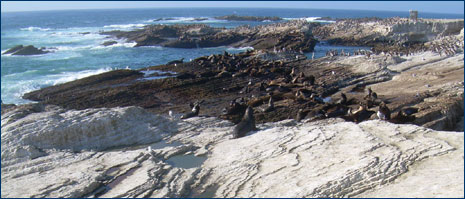 |
||
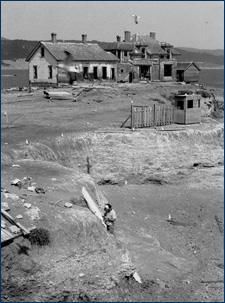 |
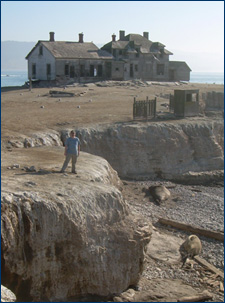 |
|
| Sea lions and seabirds rest on Monterey Formation exposures around Año Nuevo Island (top), the fossil locality in 1987 (bottom left), and Dave Haasl at the fossil locality in 2007 (bottom right) | ||